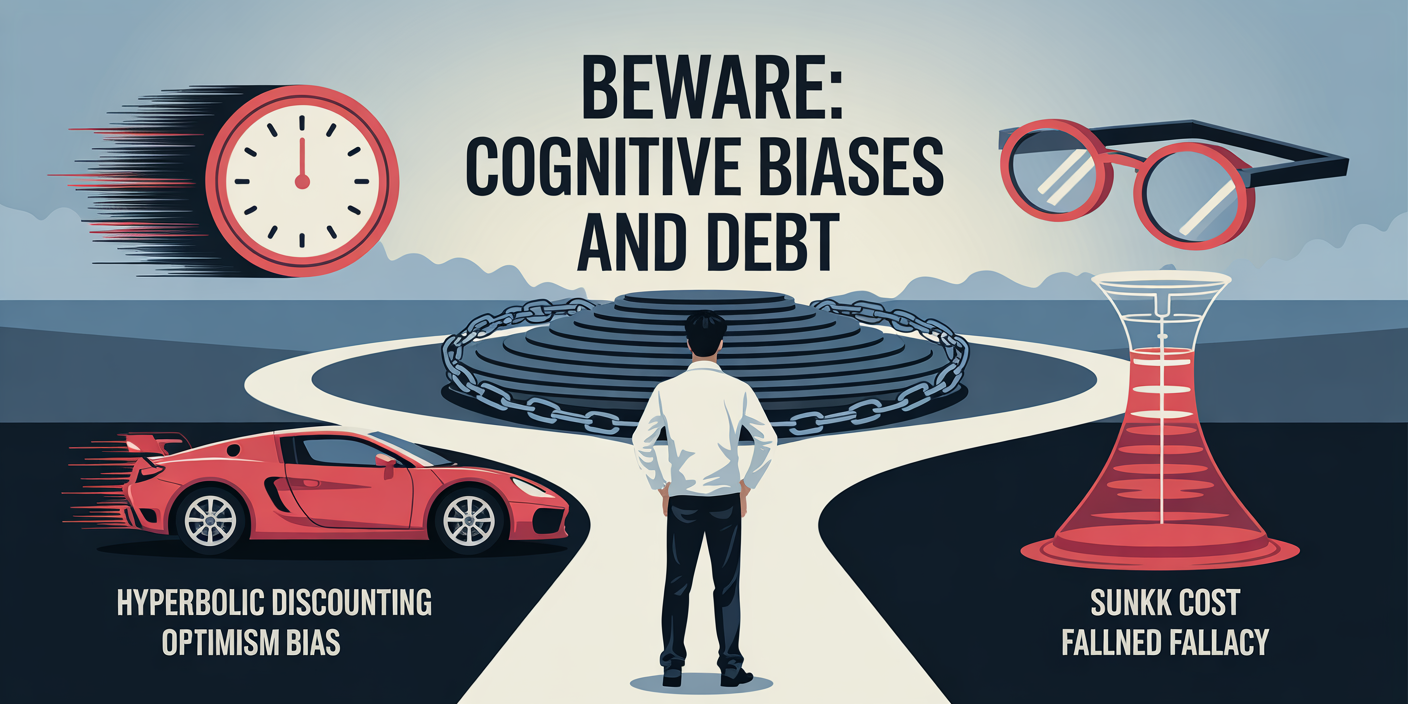Mastering Your Money Mindset: Psychological Tricks to Improve Financial Habits
Anúncios
A positive and well-structured money mindset is foundational to cultivating strong financial habits. While many focus solely on budgets, savings, or investment strategies, psychology plays an equally critical role in shaping how we manage money. Behavioral economists consistently reveal that subconscious biases, emotional responses, and mental shortcuts can either aid or derail our financial decisions. Understanding the psychological underpinnings behind money behavior not only improves financial discipline but also reduces money-related stress and anxiety.
Research from the American Psychological Association shows nearly 72% of Americans experience financial stress, which influences their spending, saving, and investing behaviors. Adopting the right mental framework can transform these pressures into structured financial growth. This article explores practical psychological techniques to help shift your money mindset, improve financial habits, and ultimately boost economic well-being.
Anúncios
Understanding Your Current Money Mindset
Before embarking on refining your financial behaviors, it’s essential to evaluate your existing mindset around money. Often, people have subconscious beliefs—some formed in childhood, influenced by family or culture—that dictate their financial choices. These can include scarcity thinking (“there’s never enough”), impulsive spending justified by emotional needs, or viewing money as a source of stress or fear.
Anúncios
Take, for example, the case of Sarah, a 35-year-old professional who grew up in a household with financial instability. Her ingrained scarcity mindset led her to prioritize short-term comfort spending over long-term savings, despite a steady income. Recognizing these patterns allowed Sarah to consciously adjust her beliefs, adopt more positive affirmations about money, and begin structured financial planning.
Self-reflection exercises such as journaling about your earliest money memories and identifying recurring financial behaviors can uncover these underlying patterns. This awareness is a crucial step toward mastery, as it enables you to catch negative thought loops before they sabotage your financial discipline.
The Role of Cognitive Biases in Financial Decisions
Cognitive biases significantly affect how people handle money, often unconsciously. Some of the most common biases include: Loss aversion: Our tendency to prefer avoiding losses rather than acquiring equivalent gains. For example, investors might hold onto losing stocks out of fear of realizing a loss, which can hamper portfolio growth. Present bias: Choosing immediate gratification over long-term benefits. This is evident when individuals prioritize buying luxury items instead of contributing to retirement funds. Confirmation bias: Seeking information that confirms pre-existing beliefs, even when evidence points otherwise. This can cause poor investment decisions or reluctance to change spending habits.
Understanding these biases allows you to create strategies that counteract their adverse effects. For instance, adopting automated saving plans reduces the temptation for impulsive spending caused by present bias. Similarly, consulting with financial advisors or peer groups helps counter confirmation bias by introducing diverse perspectives.
| Cognitive Bias | Financial Behavior Impact | Counteracting Strategy |
|---|---|---|
| Loss Aversion | Holding onto poor investments | Set predetermined sell rules |
| Present Bias | Overspending, neglecting savings | Automate savings and budgeting |
| Confirmation Bias | Ignoring critical information about spending/investment | Seek diverse opinions, use data to reassess choices |
By being mindful of these mental traps, individuals can replace reactive behaviors with proactive money management.

Harnessing Visualization and Affirmations for Financial Success
Visualization and affirmations have long been used for performance improvement in sports and business, but their application in financial behavior is increasingly recognized. Visualization involves mentally rehearsing the achievement of financial goals, which primes the brain for positive action by increasing confidence and reducing anxiety related to money.
Consider John, who visualized himself consistently living within a set monthly budget and reaching a specific savings milestone within a year. This mental exercise helped John commit to disciplined spending patterns and avoid unnecessary purchases, especially during emotionally stressful times.
Affirmations, or positive statements about money, reprogram subconscious negative beliefs. For instance, repeating phrases such as “I am capable of managing my finances wisely” or “My income grows steadily and supports my future” can gradually reshape thought patterns. A 2019 survey published in the Journal of Financial Therapy found that participants who practiced daily financial affirmations reported improved budgeting habits within two months.
Combining visualization and affirmations can empower you to maintain motivation, especially when faced with financial setbacks.
Utilizing the Power of Habit Formation to Enhance Money Management
Habits form the backbone of financial behavior. According to a 2020 study by Duke University, approximately 45% of everyday actions are habitual. Thus, converting positive financial decisions into regular habits ensures consistency and reduces the mental effort involved in money management.
Start with small, achievable behaviors that can be scaled. For example, habitually reviewing your bank statement every Sunday or setting a fixed amount to transfer to a savings account right after payday can build financial discipline. These minor routines accumulate, creating a compounding effect on your overall financial health.
James Clear, author of *Atomic Habits*, highlights the importance of the “cue-routine-reward” cycle to form new habits. Applying this to financial habits: a daily reminder (cue) prompts you to check your spending (routine), which provides satisfaction or peace of mind (reward). Over time, this cycle reinforces positive behavior, making money management almost automatic.
| Step | Example | Expected Impact |
|---|---|---|
| Cue | Notification from budgeting app | Triggers awareness of spending |
| Routine | Categorize and analyze expenses | Promotes conscious financial decisions |
| Reward | Visual progress in savings chart | Motivates continued behavior |
Embracing habit formation techniques allows money management to become an integrated, effortless part of daily life.

Leveraging Accountability and Social Support
Financial decisions do not happen in a vacuum—social environments significantly influence money habits. Research from the National Endowment for Financial Education shows individuals with financial mentors or accountability partners are 62% more likely to achieve their money goals.
Accountability can be established through partnered budget reviews, peer support groups, or working with financial coaches. When individuals know they will report progress, they tend to resist impulsive spending and maintain discipline. Furthermore, discussing financial challenges within trusted circles reduces isolation and the shame that can accompany financial mistakes.
Real-world applications include apps that allow users to share goals with friends or join communal savings challenges. For instance, companies like Qapital and Acorns incorporate social features that incentivize saving through friendly competition and shared accountability. This social dimension taps into intrinsic motivation and normative behavior, enhancing overall financial resilience.
Future Perspectives: Integrating Technology with Psychological Insights
Looking ahead, the fusion of advanced technology with behavioral finance principles promises transformative benefits for personal money management. Artificial intelligence (AI) and machine learning algorithms now power personalized financial advisors that adjust strategies based on individual behavior patterns and psychological profiles.

Apps employing gamification techniques—turning saving and budgeting into engaging, reward-driven processes—also capitalize on psychological motivators such as immediate feedback and social recognition. For example, FutureAdvisor’s robo-advisors use behavioral nudges to guide users away from impulsive decisions, while platforms like Twine create shared savings goals for couples and families.
Emerging research emphasizes the potential of virtual reality (VR) simulations to enhance visualization techniques by immersing users in realistic goal-achievement scenarios, further reinforcing motivation. Combining these methods with big data analytics can pinpoint users’ most harmful financial biases and tailor interventions accordingly.
With continuing advances, integrating neuroscience, psychology, and technology will enable highly effective, individualized money management tools. This evolution heralds an era where mastering your money mindset is supported by seamless, intelligent systems designed to optimize financial wellbeing across diverse populations.
Mastering your money mindset involves a deliberate understanding of the psychological barriers that inhibit financial success and using proven mental strategies to foster positive change. By addressing cognitive biases, cultivating constructive habits, leveraging social support, and embracing cutting-edge technologies, you empower yourself to build lasting financial health and peace of mind.



Post Comment